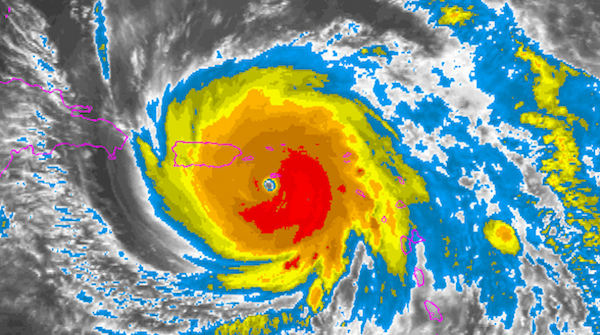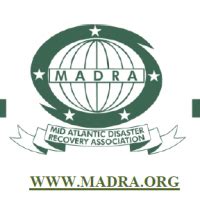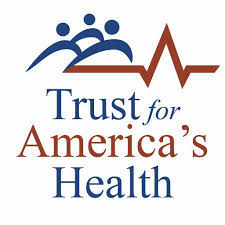emergency management
See the following -
Crisis Communication: Saving Time and Lives in Disasters through Smarter Social Media
 As the worst bushfires seen for generations in New South Wales raged across the Blue Mountains, Southern Highlands and the Central Coast two years ago, people urgently needed fast, reliable information – and many turned to their phones to get it. The NSW Rural Fire Service was prepared with a smartphone app, Fires Near Me, which was downloaded almost 200,000 times. At the height of the fires, its Facebook page was recording more than a million views an hour. A social media campaign also helped the NSW Rural Fire Service Facebook community more than double from 120,000 to 280,000, while its Twitter reach jumped from 20,000 to 37,000 followers. Crucially, this helped to alert people to danger areas and places to avoid driving near...
As the worst bushfires seen for generations in New South Wales raged across the Blue Mountains, Southern Highlands and the Central Coast two years ago, people urgently needed fast, reliable information – and many turned to their phones to get it. The NSW Rural Fire Service was prepared with a smartphone app, Fires Near Me, which was downloaded almost 200,000 times. At the height of the fires, its Facebook page was recording more than a million views an hour. A social media campaign also helped the NSW Rural Fire Service Facebook community more than double from 120,000 to 280,000, while its Twitter reach jumped from 20,000 to 37,000 followers. Crucially, this helped to alert people to danger areas and places to avoid driving near...
- Login to post comments
Engaging Citizens the Right Way: Government Uses Twitter During Hurricane Irene
For the last several years there has been a lot of discussion about the use of web based social media for the engagement of citizens. Nowhere has this discussion been more active and persistent, nor more important, than in what I will call broadly the emergency preparedness and response (EPR) community. Read More »
- Login to post comments
FEMA Chief Brock Long Calls Harvey a "Wake-up Call" for State, Local Officials
Federal Emergency Management Agency (FEMA) Administrator Brock Long called Hurricane and Tropical Storm Harvey a "wake-up call" for state and local officials when it comes to budgets. "It is a wake-up call for this country for local and state elected officials to give their governors and their emergency management directors, you know, the full budgets that they need to be fully staffed, to design rainy day funds, to have your own standalone individual assistance and public assistance programs," Long said on CBS News' "Face the Nation" Sunday...
- Login to post comments
FEMA Was Overwhelmed by Hurricanes and Wildfires in 2017, GAO Says
 The back-to-back devastation of hurricanes Harvey, Irma and Maria, followed by catastrophic wildfires in California, overwhelmed federal disaster responders in 2017, according to a government report released Tuesday. The unprecedented sequence of storms and fires forced Federal Emergency Management Agency staff to jump from one disaster to another and in some cases use uncertified workers to fill key roles. “They were 30% understaffed when Harvey hit,” said Chris Currie, director of emergency management issues at the Government Accountability Office, which wrote Tuesday’s report. “By the time Maria hit Puerto Rico, they were down to the bottom of the barrel.”
The back-to-back devastation of hurricanes Harvey, Irma and Maria, followed by catastrophic wildfires in California, overwhelmed federal disaster responders in 2017, according to a government report released Tuesday. The unprecedented sequence of storms and fires forced Federal Emergency Management Agency staff to jump from one disaster to another and in some cases use uncertified workers to fill key roles. “They were 30% understaffed when Harvey hit,” said Chris Currie, director of emergency management issues at the Government Accountability Office, which wrote Tuesday’s report. “By the time Maria hit Puerto Rico, they were down to the bottom of the barrel.”
- Login to post comments
From Coding To Tangible Results: FEMA’s First Open Data Town Hall
The approach to FEMA’s first-ever Data Town Hall was refreshing because our OpenFEMA team harked just as much about project management and results as they did about getting creative when using FEMA’s data. The attendees were asked to break into five challenge tracks: GIS, Disaster Assistance Assessment Dashboard, Accessibility, API and Fire Viz; each with a specific project and private sector team lead.
- Login to post comments
GWU Milken Institute School of Public Health releases report on deaths due to Hurricane Maria in Puerto Rico and outlines steps to protect the most vulnerable communities from disasters
 In an independent report published today, researchers at the George Washington University Milken Institute School of Public Health (GW Milken Institute SPH) estimated there were 2,975 excess deaths in Puerto Rico due to Hurricane Maria from September 2017 through the end of February 2018. The researchers also identified gaps in the death certification and public communication processes and went on to make recommendations that will help prepare Puerto Rico for future hurricanes and other natural disasters.
In an independent report published today, researchers at the George Washington University Milken Institute School of Public Health (GW Milken Institute SPH) estimated there were 2,975 excess deaths in Puerto Rico due to Hurricane Maria from September 2017 through the end of February 2018. The researchers also identified gaps in the death certification and public communication processes and went on to make recommendations that will help prepare Puerto Rico for future hurricanes and other natural disasters.
- Login to post comments
Incident Command System Should Not Be Used For Continuity Of Operations
 Let me reiterate, the INCIDENT Command System (ICS) should not be used as the organizational structure to continue operations. No way, no how. I promised a few articles ago I was going to tackle this issue – an issue which has evolved over the last 20 years or so. I will add my theories on why a preponderance of well-intentioned folks have advocated the ICS structure be used as the “logical” (to them) structure to continue the operations of an organization. I believe I speak authoritatively on this having had both feet squarely planted in emergency management and continuity communities over the past 33 years.
Let me reiterate, the INCIDENT Command System (ICS) should not be used as the organizational structure to continue operations. No way, no how. I promised a few articles ago I was going to tackle this issue – an issue which has evolved over the last 20 years or so. I will add my theories on why a preponderance of well-intentioned folks have advocated the ICS structure be used as the “logical” (to them) structure to continue the operations of an organization. I believe I speak authoritatively on this having had both feet squarely planted in emergency management and continuity communities over the past 33 years.
- Login to post comments
Infrastructure And Resilience --- The New Pride And Prejudice
 I was going about my normal business the other day when an article from the Associated Press written by Matthew Daly And Hope Yen, and titled "Lawmakers: Ida damage shows need for infrastructure upgrades" landed in my inbox. I’m one of those weird people that sees “lawmakers” and “infrastructure” in a sentence, and am drawn to it with amused interest. Usually, I am interested academically…a lot of other times as a pure masochist…and still more often than not, like this time, with snarky anticipation. “Oh, what joyous, twisted misinformation do we have here?” The article summarizes quite aptly (kudos to Mr. Daly and Ms. Yen) the rationale applied for the monstrous, record-smashing infrastructure bills being batted about the House and Senate.
I was going about my normal business the other day when an article from the Associated Press written by Matthew Daly And Hope Yen, and titled "Lawmakers: Ida damage shows need for infrastructure upgrades" landed in my inbox. I’m one of those weird people that sees “lawmakers” and “infrastructure” in a sentence, and am drawn to it with amused interest. Usually, I am interested academically…a lot of other times as a pure masochist…and still more often than not, like this time, with snarky anticipation. “Oh, what joyous, twisted misinformation do we have here?” The article summarizes quite aptly (kudos to Mr. Daly and Ms. Yen) the rationale applied for the monstrous, record-smashing infrastructure bills being batted about the House and Senate.
- Login to post comments
Mid Atlantic Disaster Recovery Association (MADRA)
 Since 1989, MADRA has provided a forum for the Mid-Atlantic's Business Continuity Planners (BCP), Continuity of Operations Professionals (COOP), Emergency Management, and the Disaster Recovery (DR) community to improve their skills through networking and education. As the regions oldest independent networking group, MADRA is dedicated to ensuring that people and organizations are better prepared to manage any type of disaster or emergency event.
Since 1989, MADRA has provided a forum for the Mid-Atlantic's Business Continuity Planners (BCP), Continuity of Operations Professionals (COOP), Emergency Management, and the Disaster Recovery (DR) community to improve their skills through networking and education. As the regions oldest independent networking group, MADRA is dedicated to ensuring that people and organizations are better prepared to manage any type of disaster or emergency event.
- Login to post comments
New Report Finds Nation's Public Health Emergencies Are Increasing While State Emergency Preparedness Levels face Challenges
 The report takes an annual snapshot of states' public health and emergency readiness. Authored by TFAH since 2003, it...highlights pressing needs for additional action particularly as weather- related and other public health emergencies become more frequent...It identifies specific action-steps that if taken would improve the jurisdiction's overall level of emergency preparedness, including dedicated funding for health security initiatives, modernizing and supporting technologies and innovations within public health programs, and building multisectoral collaboration and leadership.
The report takes an annual snapshot of states' public health and emergency readiness. Authored by TFAH since 2003, it...highlights pressing needs for additional action particularly as weather- related and other public health emergencies become more frequent...It identifies specific action-steps that if taken would improve the jurisdiction's overall level of emergency preparedness, including dedicated funding for health security initiatives, modernizing and supporting technologies and innovations within public health programs, and building multisectoral collaboration and leadership.
- Login to post comments
Ready or Not: New Report on Protecting the Public's Health
 The Trust for America's Health (TFAH) released its 2019 edition of what it hopes will be an annual report, Ready or Not: Protecting the Public's Health from Diseases, Disasters and Bioterrorism last February. The ground-breaking report warns about key global challenges ahead, like the risk of a flu pandemic; the impact of weather pattern changes due to climate change; the dangers of antimicrobial resistance, and others, and tries to offer advice on how to prepare for them.
The Trust for America's Health (TFAH) released its 2019 edition of what it hopes will be an annual report, Ready or Not: Protecting the Public's Health from Diseases, Disasters and Bioterrorism last February. The ground-breaking report warns about key global challenges ahead, like the risk of a flu pandemic; the impact of weather pattern changes due to climate change; the dangers of antimicrobial resistance, and others, and tries to offer advice on how to prepare for them.
- Login to post comments
Resilience Must Be Blind to Catalyst - Part II
 If this is the first time you are reading something from me, let me introduce you to a phrase I coined in the early 2000s: "resilience (and continuity) is blind to the catalyst." My oft-repeated comment was to present an alternative to the emergency management foundations that were creeping into the continuity lexicon, whereby contingency planning is typically done with a "commensurate with the hazard" or "capabilities-based" approach. Resilience is and must be viewed with a much higher level of consideration…and NOT limited to specific hazards or capabilities. As I most certainly just ruffled feathers of some of my dearest and most deeply respected emergency management professionals, let me explain.
If this is the first time you are reading something from me, let me introduce you to a phrase I coined in the early 2000s: "resilience (and continuity) is blind to the catalyst." My oft-repeated comment was to present an alternative to the emergency management foundations that were creeping into the continuity lexicon, whereby contingency planning is typically done with a "commensurate with the hazard" or "capabilities-based" approach. Resilience is and must be viewed with a much higher level of consideration…and NOT limited to specific hazards or capabilities. As I most certainly just ruffled feathers of some of my dearest and most deeply respected emergency management professionals, let me explain.
- Login to post comments
Rock Around The Resilience Wheel - Continuity of Operations Through Disruptive Change
 As 2020 comes to a close we are still faced with myriad issues pertaining to public health, elections, economic duress and recovery, unemployment, and living under persistent, pendular change. Resilience has become a popular buzzword to get through these times but is utilized to mean very different things to people looking through very different lenses. Diverse definitions are great but at some point, at some higher and comprehensive perspective, a bow must be put around a common resilience baseline. In layman’s terms, resilience is getting through disruptions and change with some foresight and planning. Resilience matters regardless of the lens you are viewing it through. Covenant Park has coined several catchphrases over our several decades of resilience, risk, continuity, emergency management, security, and national and international planning and execution. Some of those phrases include:
As 2020 comes to a close we are still faced with myriad issues pertaining to public health, elections, economic duress and recovery, unemployment, and living under persistent, pendular change. Resilience has become a popular buzzword to get through these times but is utilized to mean very different things to people looking through very different lenses. Diverse definitions are great but at some point, at some higher and comprehensive perspective, a bow must be put around a common resilience baseline. In layman’s terms, resilience is getting through disruptions and change with some foresight and planning. Resilience matters regardless of the lens you are viewing it through. Covenant Park has coined several catchphrases over our several decades of resilience, risk, continuity, emergency management, security, and national and international planning and execution. Some of those phrases include:
- Login to post comments
Ushahidi - An Open Source Disaster & Crisis Management Mapping Tool
 Ushahidi is a non-profit technology company specializing in developing open source software (OSS) for information collection, visualization, communications, and mapping. The core platform is built on the premise that gathering crisis information from the general public provides new insights into events happening in near real-time. It can also be used to help organizations marshal efforts to assist areas facing manmade or natural disasters that are not well covered in the mainstream media.
Ushahidi is a non-profit technology company specializing in developing open source software (OSS) for information collection, visualization, communications, and mapping. The core platform is built on the premise that gathering crisis information from the general public provides new insights into events happening in near real-time. It can also be used to help organizations marshal efforts to assist areas facing manmade or natural disasters that are not well covered in the mainstream media.
- Login to post comments
Washington State’s Plan for Megaquake ‘Grossly Inadequate,’ Review Finds
The largest disaster drill ever conducted in the Pacific Northwest found that, despite decades of warnings, the region remains dangerously unprepared to deal with a Cascadia megaquake and tsunami. During the four-day “Cascadia Rising” exercise in June, 23,000 participants grappled with a hypothetical catastrophe that knocked out power, roads and communications and left communities battered, isolated — and with no hope of quick relief...
- Login to post comments